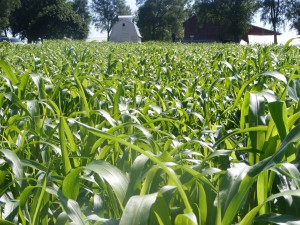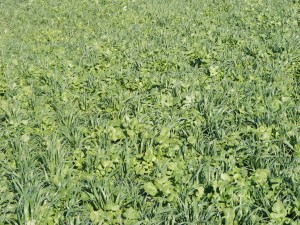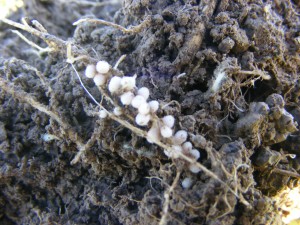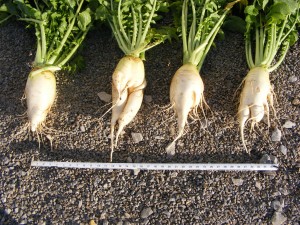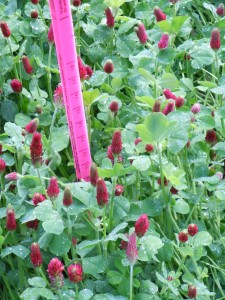If you spend any time at all in cover crop meetings, you may have heard that it’s a good idea to add 20-50# of Nitrogen per acre to your cover crop – if you don’t have a legume in the mix or you don’t have manure available. You also probably heard (or participated in) the grumbling that predictably starts from the crowd. Who wants to fertilize a crop that they will not harvest?
While it’s true that producers will not “harvest” the cover crops, they will have healthier cover crops which should lead to healthier soils and healthier profits.
Manure as the No-Brainer
Obviously if manure is available it is a smart move to put manure where you will have or already have cover crops. We know from research that cover crops can hold as much as 90% of the nutrients from manure applications.
We have also know that where manure is applied without a cover crop being present (even if worked in) we can lose a significant amount of nutrients into ground water or as surface run-off.
What About Adding Commercial Fertilizer?
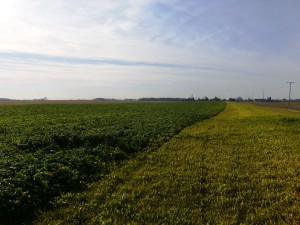
But, what if there is no manure to apply and for some reason you do not want to include a legume in your system?
Is it worth applying 50# of nitrogen to produce a cover crop?
Let’s look at what we think we know:
- Pages 22-24 of Managing Cover Crops Profitably provide formulas to figure out the value of using cover crops as a green manure in a cover crop system – whether with legumes, manure, or fertilized.
Look especially at the section on “Potential losses” to see that there can be nitrogen losses even in this scenario.
- Cover crop experts say to count on 50% of the N captured or N produced by a cover crop to be available to the next cash crop.
- It appears that adding a grass with legumes or brassicas will help “slow down” the release of the N in the spring making it more slowly released to the next crop.
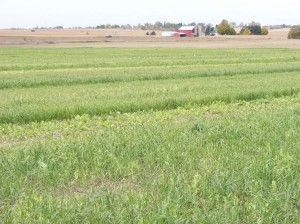
What can we expect if we plant a cover crop and we don’t add more nitrogen?
How will that cover crop do?
I will utilize work that Dan Hudson did when he was an Extension educator in Ingham County Michigan in cover crop plots he planted back three or four years ago.
- Radish tubers are considerably smaller and the roots appear to not be as deep (I have not dug a root pit in this scenario).
- Grasses have a more shallow root system in forage settings when fertility is lacking.
- The cover crops were pale green.
- The “hungry” grass cover crops had less earthworm activity than in the grass + legume mix plots.
- “Hungry” radishes and turnips had much less tuber and top growth, thus sequestering less nutrients (one of their main functions).
- Winterhardiness on cover crops is potentially not as good when the cover crop is undernourished.
What can we expect after soybeans?
Do we need a legume in the cover crop mix following the beans or is having a grass and/or brassica to sequester the N from the soybeans good enough?
Let’s investigate the difference between adding a legume to a cover crop mix following soybeans compared to planting scavengers only. The charts are from our family farm trials. The charts show the chlorophyll readings of the corn in the year following the soybeans (and then following a cover crop).
It is important to look at the “Y” axis as each chart is slightly different in how it shows the top reading.
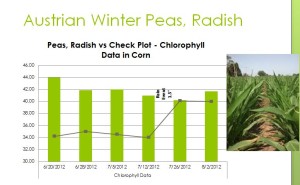
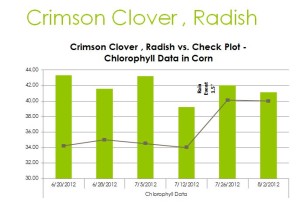
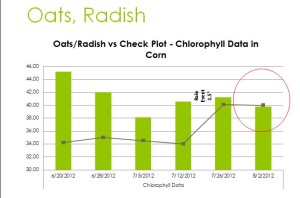
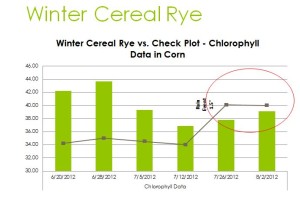
As we looked at the yield of the corn in these plots we saw a considerable difference – suggesting that even after soybeans we might want to add a legume to improve the corn yield the following year.
Yields from the different cover crop plots shown above were:
Check Plot 105.24 bu/ac
Winter Cereal Rye 126.86 bu/ac
Oats and Radish 138.79 bu/ac
Crimson Clover + Radish 153.99 bu/ac
AW Peas + Radish 164.82 bu/ac
Conclusion
All indicators seem to point that adding manure, a legume, or additional N might very well pay off when planting a cover crop, even after soybeans. However, adding a nitrogen source is not necessarily vital to having a successful cover crop system. I would suggest that you try different scenarios on your own farm and in your own system and see what works best for you.



